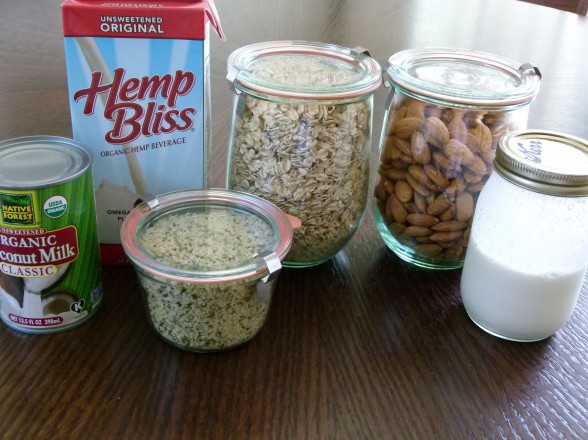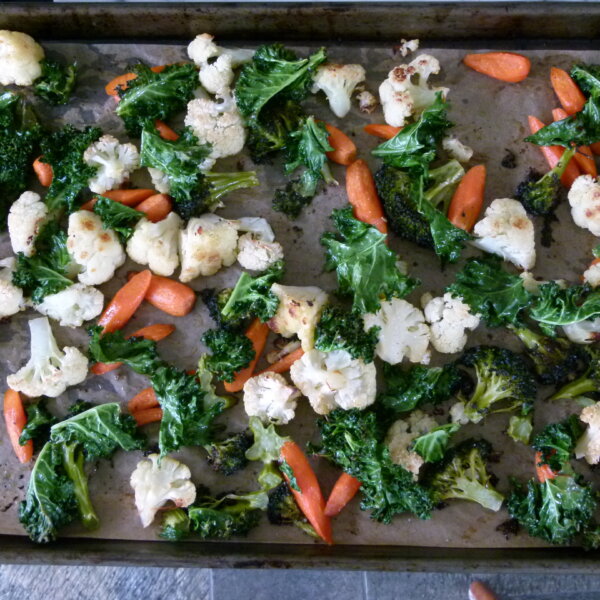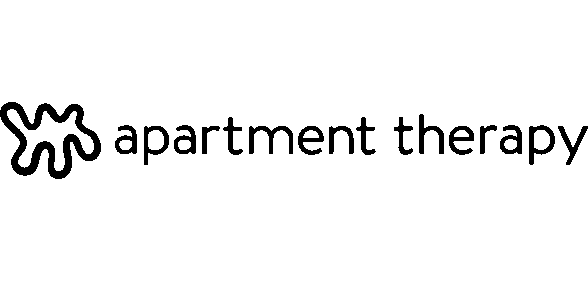I get a lot of requests in my classes for non-dairy substitutions from people who are lactose-intolerant or because they have a lactose-intolerant child. If you’ve been to a supermarket lately, I’m sure you’ve noticed how popular alternative milks have become. There’s certainly no rule that kids need to drink a white beverage at every meal, no matter what you see on tv. But these beverages have a place in the kitchen that go beyond the glass. With so many to choose from, it can be a challenge knowing what milk to use when. Here’s my Alternative Milk Guide:
ALMOND MILK
Almond milk has a mildly sweet and nutty flavor. Like most of the alternative milks, it is actually very easy to make since it is just soaked almonds blended with water and strained. You can find unsweetened, sweetened and flavored versions. Check out my step-by-step instructions on how to make your own almond milk — 3 different ways.
Nutritional profile: It is very low in fat, but also low in protein and carbohydrates. Be careful about buying sweetened almond milk which can be high in sugar. Clearly, almond milk cannot be consumed by someone with a nut allergy. It is gluten-free.
Use: Great in smoothies, hot cereals, coffee or tea. I have also used it in baking and soups, too. Try this recipe for brown rice pudding.
COCONUT MILK
This is made by pressing the coconut flesh and adding water.
Nutritional profile: Coconut milk is very rich in medium-chain saturated fatty acids, but this fat is used by the body quickly as energy, as opposed to being stored as fat. It contains lauric acid, a powerful immune-boosting fatty acid also found in breast milk. Coconut milk is very low in carbohydrates and low in protein. It usually has a thickener added, like guar gum. Some people with nut allergies can drink coconut milk, but some can’t. Coconut milk is gluten-free.
Use: I have used coconut milk in smoothies, brown rice pudding, curry dishes, popsicles, desserts, and coconut rice. Make sure you shake the can well before opening since the fat will be concentrated on top. I like Native Forest Coconut Milk since the cans are BPA-free. You can freeze unused coconut milk in an airtight container.
HEMP MILK
Hemp milk is made by blending hemp seeds with water and straining it. You can find unsweetened, sweetened and flavored varieties.
Nutritional profile: Hemp milk does not contain THC, the active ingredient in marijuana, so fortunately (or unfortunately) you cannot get high from hemp milk. Hemp milk contains a moderate amount of Omega-3 and Omega-6 fatty acids (5 grams/cup), and in an ideal ratio. It is low in carbohydrates and sugar, but contains some protein (2 grams/cup). Many people find hemp seeds and milk easy to digest. Hemp milk usually contains some sort of thickener, such as gum acacia. It may be unsuitable for people with nut or seed allergies. It is gluten-free.
Use: I think hemp milk substitutes very closely for whole cow milk in recipes. I have used it successfully in baking, French toast, savory bread puddings, soups, smoothies and hot cereal. For a weekend treat, I’ll finish off a pot of oatmeal with chocolate hemp milk and I call it….”Chocolate Oatmeal!” Once I tried using it to make fudgsicles, however, and they didn’t taste great.
OAT MILK
Oat milk is made by soaking oats in water, blending and straining it.
Nutritional profile: Oat milk contains some fiber and protein. But it is also relatively high in carbohydrates and (naturally occurring) sugar. It is appropriate for those with nut allergies, but is is not gluten-free.
Use: You can drink it chilled, or use it in smoothies and baked goods.
RICE MILK
Rice milk is made by blending cooked rice with water and straining. I find rice milk to be a bit too watery to use in place of milk and very low in nutrition, so I never buy it. It is suitable for people with nut allergies and it is gluten-free.
Nutritional profile: Low in protein and fat, but high in carbohydrates and sugar (naturally occurring.) Rice milk contains few natural nutrients, so it’s really not ideal for children.
Use: You can use it in smoothies and hot cereal and probably soup. I know you can also drink it chilled, straight up.
SOY MILK
Soy milk is made by soaking soybeans and blending them with water and straining. You can find unsweetened, sweetened, flavored and chocolate versions. Soy milk is very widely available and substitutes well for whole milk.
Nutritional profile: Soy milk has the highest protein content of all the alternative milks and is low in carbs with a moderate amount of fat. Many soy milks contain additives, since straight soy milk doesn’t taste wonderful, so be careful of all the flavors and sweeteners added. Most soy in this country is genetically-modified, so I would encourage you to look for organic or “non-GMO” soy milk. Many people consider unfermented soy difficult to digest. In addition, soy contains isoflavones which can mimic estrogen in the body and be disruptive to the body’s hormonal cycles. I avoid unfermented soy, but if you enjoy it, I would recommend exercising moderation.
Use: Soy milk can be used in hot beverages, smoothies, soups, hot cereals and in baking. Look for unsweetened, plain soy milk for use in savory recipes.











I love your web site!!! You give really great info out. I agree 100% with your take on the various “milks”. Keep the info coming!!
Thanks so much, Autumn!
i switched my daughter from drinking soy to hemp milk. She usually has a glass(warm) before bedtime. I’ve noticed that the hemp milk has some solid residues in it that doesn’t dissolve…is that normal? after she drinks her milk, I sometimes see it at the bottom of the cup as well.
Good switch! I’m not a fan of soy milk, especially for girls/women. Hemp milk and almond milk have a tendency to separate so shake them before pouring. The solid residues are likely from the milk not being strained well. It sounds normal to me.
Wow. Your website is amazing and this is especially helpful since I have researched a multitude of websites for this info, and here you summed it up in one perfect page! Well done, and thank you.
Thanks so much! I’m really glad the info was helpful to you.
Excellent suggestion! Thank you!
Jus a comment about rice milk. I like to use it when a child (or an adult) has the stomach
flu. I like making oat meal, or cream of wheat with L.F. milk. That’s the way my grandmother
made it and it was a treat getting a creamy warm nutritious breakfast with lots of cinnamon.
When someone in my family can’t have milk, I substitute with rice milk. I guess it makes me
feel better. If a toddler has diarrhea and wants milk, you might make them happy with rice milk.